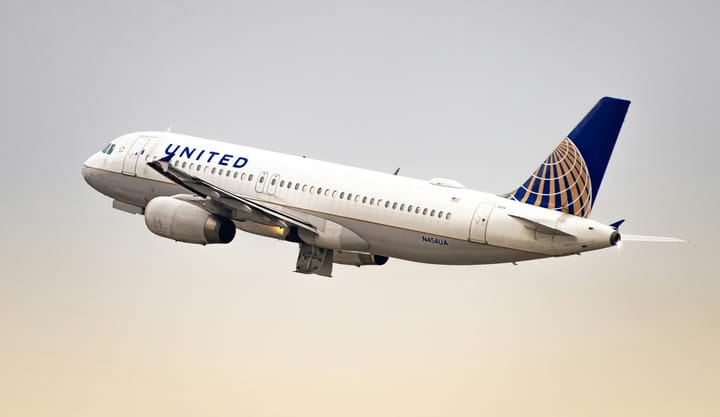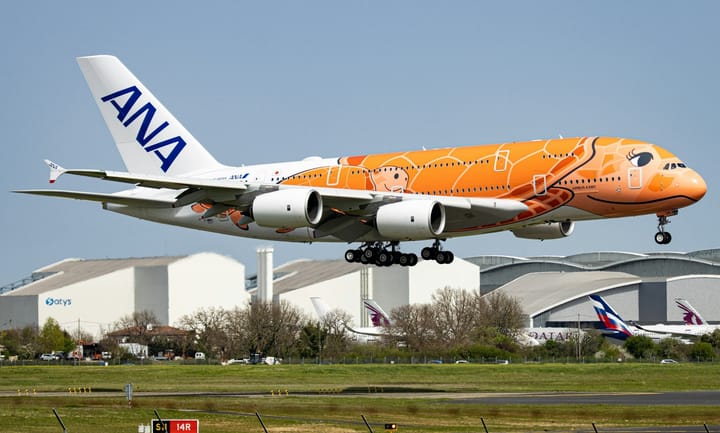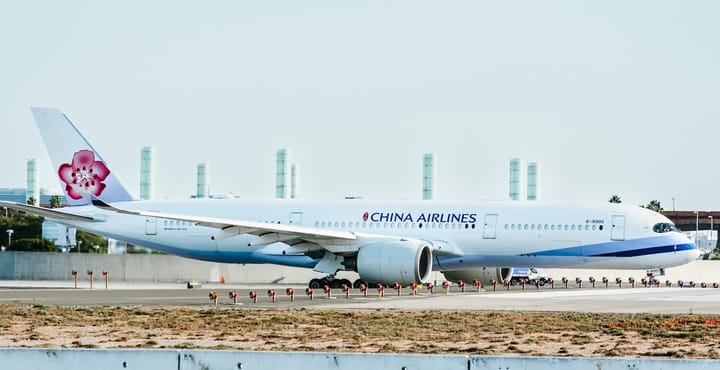Allegiant Air specializes in domestic leisure travel, connecting smaller cities to popular destinations with a focus on efficient fleet use and seasonal scheduling. Its growth is supported by expanding route networks and diversified ancillary services, reinforcing its position in the U.S. market.
1. Total Passengers Carried
Over the past five years Allegiant Air’s traffic rebounded strongly. By 2022 Allegiant carried ~16.7 million passengers (exceeding its 2019 total of 15.0M), rising to ~17.23M in 2023 before a slight slip to ~16.85M in 2024. The 2023 total marked an all-time annual high. This growth reflects aggressive network expansion into small-city leisure markets and transition to an all-Airbus fleet (begun in 2018). For context, by mid-2018 Allegiant had flown over 80 million passengers since its inception.
New aircraft deliveries and route launches drove the gains. Through 2024 Allegiant operated ~533 active non-stop routes from 86 cities, often without competition (77% of proposed new routes lack current service). The airline announced 44 additional nonstop routes (including service to three new cities) in late 2024, underscoring its leisure focus. All of this added seat capacity: average stage length (flight distance) was ~893 miles (2024), enabling more RPMs per flight. Loyalty programs also expanded; the co-branded Allways Rewards Visa had ~18.0 million members by end-2024, reflecting a broad passenger base.
However, growth has moderated recently. In 2024 Allegiant intentionally held capacity flat (departures virtually unchanged from 2023) as crew shortages and rising costs limited expansion. The airline faced a tight pilot market – by early 2024 it reported a “scarcity of pilots for hire” and added large retention bonuses. This staffing pinch kept flight counts stable and capped passenger totals. Seasonal demand shifts also play a role: Allegiant flies very few mid-week services (only ~11% of its ASMs on Tuesdays/Wednesdays) to preserve load factors, which means its annual passenger count depends heavily on high-utilization periods.
Milestone achievements highlight the scale of Allegiant’s operation. Its loyalty program and ancillary products have gained industry recognition – for example, its credit card and rewards program have been voted USA Today’s #1 Airline Credit Card and #1 Frequent Flyer program (sixth consecutive year). These awards reflect a disciplined focus on leisure travelers, which in turn supports high passenger volumes.
Despite the strong customer growth, Allegiant’s model also has exposure. Economic or operational headwinds (e.g. cost inflation, labor disputes) can slow traffic; indeed, 2024 saw a slight passenger decline from the record 2023 peak. Going forward, Allegiant aims to leverage its identified 1,400+ future route opportunities (mostly underserved markets) to resume growth once constraints ease.
2. Total Flights Operated
Allegiant’s flight activity has likewise rebounded to pre-pandemic levels. In 2024 the airline operated 115,204 scheduled flights (departures), essentially flat with 114,791 in 2023 and above the 112,943 flown in 2022. These departures carried the roughly 17.0 million passengers noted above, with little change in flights despite passenger fluctuations. (The totals above exclude “fixed-fee” charter flying, such as military contracts; fixed-fee flying surged ~34% in 2022.)
Allegiant’s schedule reflects its leisure strategy. As of early 2025, it served 533 active non-stop routes across 23 U.S. bases. Its network has a broad geographical footprint – for example, major leisure gateways: 72 routes to Orlando, 62 to Tampa, 55 to Las Vegas, etc – yet most markets have low flight frequency. The company purposefully concentrates flights on high-demand days (weekends and holidays). In fact, only about 11% of its annual seat-miles were flown on Tuesday/Wednesday in 2024. This yields high utilization of each aircraft on peak days (nearly 6.3 block-hours per day per plane on average), at the cost of minimal mid-week service.
Fleet growth has supported departures. Allegiant’s average fleet size rose from ~114 planes in 2022 to ~125 in 2024. Despite this, flight counts held nearly constant as management prioritized efficiency over network breadth. CEO communication indicates a long-term goal of ~1,000 daily peak-period departures once economics allow. The first Boeing 737 MAX was inducted in late 2024, and future MAX deliveries (with 189 seats) are expected to expand capacity, potentially enabling more flights in peak seasons beyond current levels.
Key expansion steps were taken in 2024–25. On the product side, Allegiant announced 44 new nonstop routes (including service to three new cities) late in 2024, most to destinations that previously had no nonstop connection. These additions – often seasonal – will add flights. The airline continues to tap unserved corridors: it identified 1,400+ potential new routes (77% of which currently have no nonstop competition). Given such runway for growth, departures could resume rising once crew and equipment availability improve.
Yet notable challenges have kept flight volume in check. Pilot staffing remains stretched, delaying schedule additions. Additionally, regulatory or strategic factors have limited certain expansions (for example, a planned leisure alliance with Mexico’s VivaAerobus has been delayed by DOT reviews).
3. Available Seat Miles (ASM)
Available Seat Miles (ASMs) – the industry measure of capacity – has been essentially flat in recent years. Allegiant offered about 18.3 billion seat-miles in 2024, up only 0.6% from 2023’s 18.2 billion. The slow growth in ASMs (2024 vs. 2023) followed from minimal fleet-rate growth (average fleet ~125 jets) while shifting schedule loads toward peak periods. For comparison, ASMs in 2022 were 17.9B, after already rebounding strongly from the 2020 trough.
Capacity gains have largely come from larger planes and network tweaks rather than more flights. As Allegiant replaced smaller MD-80s with high-density A319/320s and now adding 737 MAXs, average seats per aircraft moved up. The 2024 average seats per flight was 176.0, effectively unchanged from 176.3 in 2023, but each plane can fly more hours per week on peak days. By better utilizing its 125-plane fleet (average block hours per day ~6.3 in 2024) Allegiant sustains ASM mostly through full flights on busy routes rather than flying empty seats.
Fuel efficiency and operational practices helped contain capacity costs. Allegiant’s single-fleet Airbus model (completed 2018) and introduction of blended winglets (“sharklets”) have improved fuel burn. It does not hedge fuel but reported average fuel cost per gallon of $2.76 in 2024, down from $3.09 in 2023. Notably, Allegiant’s ASMs per gallon of fuel (~83.5 ASM/gal in 2024) exceeded industry averages by flying long segments nonstop. These efficiencies mean Allegiant can offer slightly more capacity at relatively low incremental cost.
Operational limits have constrained ASM growth. Pilots and other crew were scarce in 2023–24, so Allegiant chose to cap capacity rather than fly empty seats. The result was a negligible ASM increase in 2024. Management is focusing on “restoring peak utilization” (e.g. up 16.4% in Dec 2024 vs prior year) rather than naive capacity chase. As one SEC filing noted, Allegiant sees room for growth: it has identified ~1,400 target city pairs (77% with no existing service) but “adding significant numbers of new routes has been constrained… by flight crew staffing, high fuel costs, [and] economic conditions”
By late 2024, new jet inductions signaled future ASM lift. The first Boeing 737 MAX entered service in Q4 2024, offering higher capacity (and improved CASM) than Allegiant’s previous fleet. In 2025 Allegiant plans 5%–7% capacity growth, largely via higher aircraft utilization and further MAX deliveries. Any such growth in ASMs will be gradual: management emphasizes earning the right to expand, having a 1,000 departure target “over time”. In short, capacity is steady near current levels, pending resolution of crew and equipment bottlenecks.
4. Revenue Passenger Miles (RPM)
Revenue Passenger Miles (RPMs) – total miles flown by paying customers – have closely tracked ASMs. Allegiant flew ~15.4 billion RPMs in 2024, down slightly from 15.73B in 2023. This dip mirrors the flat capacity: without adding seats or frequency, passenger mileage plateaued. RPMs were strong relative to pre-pandemic: e.g., Allegiant logged 13.1B RPMs in 2019, fell in 2020–21, then rebounded to ~15.3B in 2022. The 2024 figure is still well above 2019 levels.
The drivers of Allegiant’s RPM growth have been network and demand. By focusing on under-served city pairs (often long leisure flights), Allegiant has sustained high RPM per flight. The average stage length has been among the industry’s longest (~893 miles in 2024), boosting RPMs per departure. It regularly adds flying during peak travel peaks – summer, holidays – when leisure demand is highest. Indeed, during July 2022 Allegiant averaged over 8 block hours/aircraft/day, versus ~4.7 in off-peak September, illustrating how seasonal deployment drives RPM.
Ancillary revenue initiatives have also helped RPM lift. While base fare per RPM (yield) dipped slightly in 2024 (yield 7.11¢ vs 7.59¢ in 2023), total revenue per ASM (TRASM) remained relatively stable (12.88¢ in 2024 vs 13.38¢ in 2023). Allegiant’s average base ticket declined (to $64.89 from $69.25), but higher air-related and third-party ancillary surcharges compensated (airline-imposed fees averaging $67.35 in 2024). In other words, RPM growth came with a richer blend of yield products.
Co-brand credit card fees and package bookings, not counted in RPM, also bolstered total revenue. For example, credit-card remittances grew ~19% in Q3 2024, supporting ancillary takings. Despite these strengths, 2024 saw modest RPM headwinds. A slightly lower load factor (see next section) and selective capacity meant RPMs edged down.
There were also short-term disruptions: in late 2024 Hurricanes Helene and Milton temporarily depressed demand in Florida and South Carolina (Allegiant’s leisure network is sensitive to such regional events). Management noted roughly 25% of Q4 seats were to areas with weak demand and forecast a ~4-point load factor drag from this event. Nonetheless, by year-end Allegiant was largely content that underlying demand remained intact; the company adjusted capacity accordingly.
5. Passenger Load Factor (%) Analysis
Load factor – the percentage of available seats actually flown by passengers – has been exceptionally high for Allegiant, reflecting its niche strategy. In 2023 Allegiant’s systemwide load factor was a record 85.9%, among the highest in U.S. domestic flying. It eased to 83.6% in 2024, as ASMs grew slightly faster than RPMs. Even at 83.6%, Allegiant’s load factors remain well above typical legacy carriers (often 75–80%), indicating efficient capacity matching. Over 2022–2024 Allegiant consistently managed loads in the mid-80% range – e.g. 85.0% in 2022 – due to its practice of avoiding low-demand flying.
This performance stems from network and scheduling tactics. Allegiant’s flights are nonstop from small cities to vacation destinations, capturing high-density leisure traffic. The carrier only flies routes (or days) where it sees sufficient demand. For example, management reported in 2024 that only ~11% of seat-miles were flown on Tuesdays/Wednesdays; by skipping weak days, average loads rise. In 2024 Allegiant also deployed its fleet heavily during peak periods – peak December utilization was up 25% over prior year – ensuring seats remained filled when flying.
Full-year statistics show Allegiant’s scheduled service load factor dropped from 85.9% in 2023 to 83.6% in 2024. The dip was partly due to adding some capacity on newly announced routes. In Q3 2023, for instance, some high-density summer routes slowed and ancillary packages became a focus, but by Q4 2024 management again emphasized yield. For context, Allegiant’s average fare (base + ancillary) in 2024 was $140.72, helping keep revenues high even when each flight had slightly more empty seats.
6. Financial Performance Analysis
6.1. Operating Revenue ($) Performance
Allegiant’s total operating revenue has steadily recovered post-pandemic and edged above pre-COVID levels. Full-year 2024 revenue was about $2.513 billion, essentially flat (+0.1%) with 2023’s $2.510B. Airline-only operating revenue was slightly lower ($2.441B vs $2.507B, −2.6%) as ancillary resort sales were excluded. This follows a jump from $2.302B in 2022. The modest top-line growth belies stronger volume recovery: passenger traffic and ASMs are up double-digits from 2021, but Allegiant held fares low for market share. Instead, revenue gains have come mostly from non-ticket sources.
• Allegiant earned a record $75.83 in ancillary revenue per passenger in 2024, up 4.0% from the previous year.
• This growth came from higher fees on seats, bags, insurance, and new bundled offerings like “Allegiant Extra.”
• The Allways Visa co-branded credit card generated over $140 million in banking fees in 2024, including $36.5 million in Q3 alone — up 18.7% year-over-year.
• Total ancillary yield reached $140.72 per passenger, combining base fare with all paid add-ons.
• Allegiant keeps fares low but relies heavily on add-ons instead of aggressive discounting, which helps preserve pricing power.
• Still, unit revenue per ASM (TRASM) declined to 12.88¢, down from 13.38¢ in 2023, reflecting softening ticket yields and more market competition.
• The average base fare dropped to $64.89, continuing pressure on core passenger revenue.
• Ancillary strength was supported by military charters, which made up about 25% of scheduled flying in 2024.
• In Q4 2024, Allegiant posted $627.7 million in revenue (+2.7% YOY), driven by record ancillary sales of $78.43 per passenger.
• Allegiant achieved $128.2 million in adjusted operating income for the year (5.1% margin), showing strong cost discipline, even as system revenue was flat.
• A key strategic change — the Navitaire reservation system transition — briefly disrupted bookings in 2023 but is expected to boost revenue by 2026.
While mostly positive, revenue has been tempered by higher costs and one-time items. In late 2024, Allegiant shut down its dividend and took a $322.8M charge on a new hotel project (the Sunseeker resort at Punta Gorda), so GAAP revenue did not cover all expenses. Excluding the resort’s volatility, airline revenue remained solid. The company also highlighted that nearly 80% of its routes face no direct competition, (the Sunseeker resort at Punta Gorda),protecting yields. Going forward, continued route growth (e.g. the 44 announced routes) and non-ticket initiatives (like expanded credit card deals) will be key to lifting operating revenue beyond current stagnation.
6.2. Net Income ($) Analysis
Allegiant’s net profit picture over 2022–2024 is one of swinging back to profitability and then a sharp setback. In 2022 Allegiant earned $66.7M in GAAP net income; in 2023 this jumped to $149.9M (fueled by strong leisure demand and high load factors). However, 2024 saw a GAAP net loss of $164.4M. The headline swing is entirely due to a one-time $322.8M impairment of its Sunseeker Resort asset. On an adjusted basis (excluding special charges), 2024 net income was about $45.7M versus $136.6M in 2023, showing that core airline profitability softened but remained positive.
• Labor costs surged in 2024, with Allegiant spending $91.5 million on pilot retention bonuses to stay competitive in a tight labor market.
• Overall salaries and benefits rose about 19% year-over-year, reflecting rising compensation across the workforce.
• Although fuel costs per gallon declined, total fuel expense dropped just 9.8%, and savings were offset by inflation and maintenance increases.
• As a result, airline-only unit costs (CASM ex-fuel) rose to 8.80¢, up from 8.31¢ in 2023, even with flat flying capacity.
• This cost pressure reduced airline-only operating margin to 7.7%, down from 11.4% the year before.
• On the upside, adjusted earnings per share (EPS) for the airline-only segment hit a record $5.84, showing continued strength when excluding non-core operations.
• However, total adjusted EPS fell to $2.48, compared to $7.31 in 2023, due to large one-time charges related to new investments.
• A key factor was Sunseeker Resort, which opened in December 2023 but underperformed due to low occupancy and storm damage. Allegiant now plans to seek a buyer or partner for the asset.
• Excluding Sunseeker losses, net income in 2024 was $45.7 million, still below 2023’s adjusted $136.6 million (which included an $11 million resort recovery gain).
• Management emphasized that profit shortfalls were tied to new investments and short-term disruptions, not legacy operations, and forecast improvement as storm impacts and system transitions normalize.
For investors, 2024’s loss serves as a reminder that Allegiant’s profits are cyclical and can be volatile. Even in strong demand years (2023), margins are thin by legacy-carrier standards (single digits). On the positive side, Allegiant’s business remains highly cash-generative – the airline carried minimal debt on its owned aircraft – and it has never posted an annual operating loss in its history. The recent press releases highlight cost discipline (CASM excluding fuel fell slightly in 2024 on higher capacity) and future growth drivers. As fleet utilization and ancillary initiatives ramp up in 2025, the company aims to restore its typical modest profit levels.




Comments ()